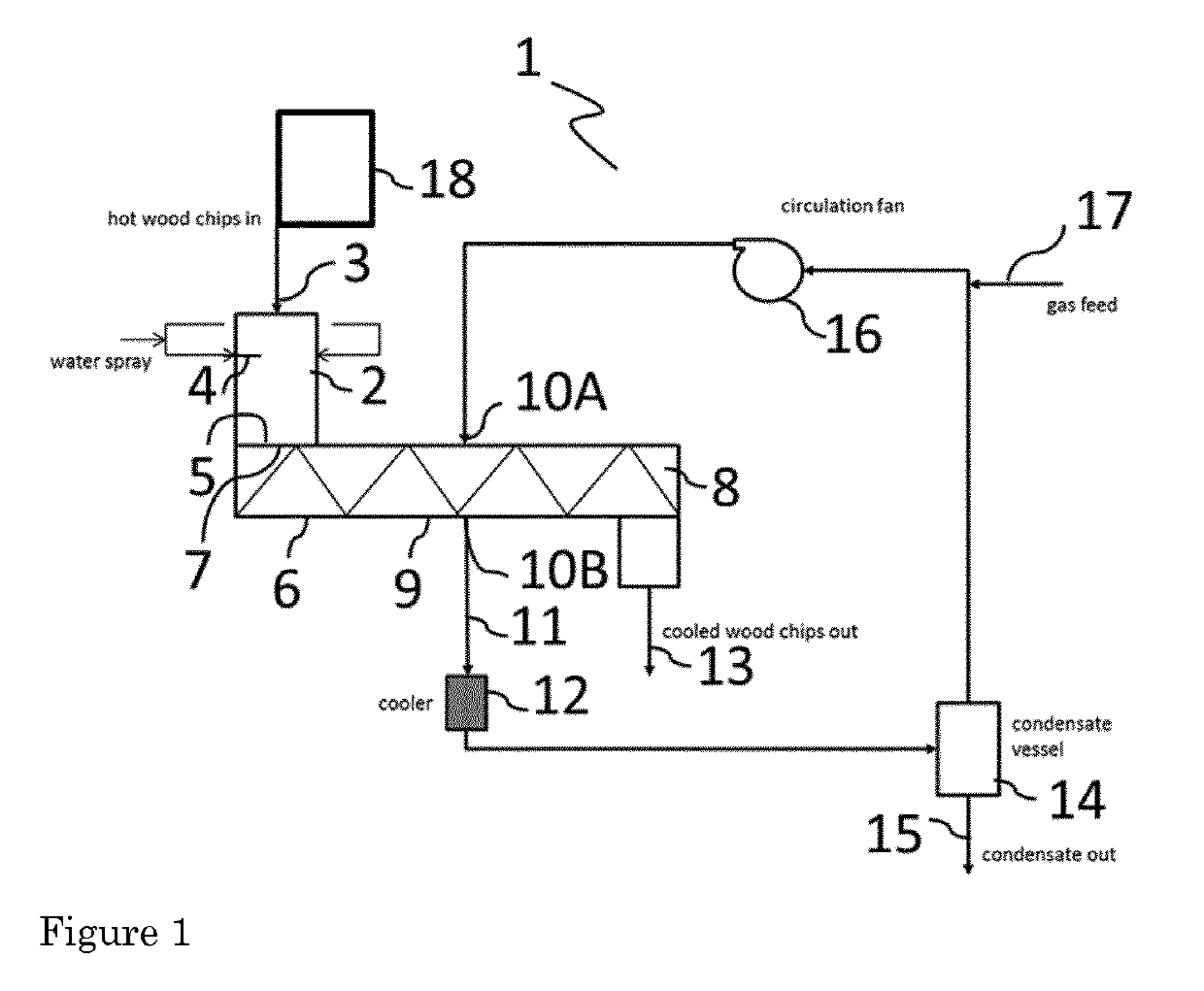Cooling acetylated wood elements
a technology of acetylated wood and cooling method, which is applied in the direction of manufacturing tools, lighting and heating apparatus, and drying machines with progressive movements, etc., can solve the problems of low heat transfer coefficient of wood elements, unsatisfactory current cooling method of acetylated wood elements, and difficulty in cooling
- Summary
- Abstract
- Description
- Claims
- Application Information
AI Technical Summary
Benefits of technology
Problems solved by technology
Method used
Image
Examples
Embodiment Construction
[0011]The invention generally relates to the production of acetylated wood elements and to the cooling of acetylated wood elements. The invention is in an aspect based on the judicious insight that a combination of wetting of hot acetylated wood elements with a liquid and evaporating the liquid from the wetted wood elements provides efficient cooling of acetylated wood elements. Accordingly, the process comprises supplying a liquid, preferably water, to the acetylated wood elements to provide wetted wood elements and exposing the wetted wood elements to a gas flow. The exposure to the gas flow causes evaporation of the aqueous liquid which is in contact with the wood elements, resulting in a temperature decrease of the wood elements. In the present invention, the wetting and exposing are used to provide for evaporative cooling of hot acetylated wood elements. This may be contrasted to for example air conditioning methods using evaporative cooling to cool air.
[0012]The process compri...
PUM
| Property | Measurement | Unit |
|---|---|---|
| Temperature | aaaaa | aaaaa |
| Weight | aaaaa | aaaaa |
| Fraction | aaaaa | aaaaa |
Abstract
Description
Claims
Application Information
 Login to View More
Login to View More - R&D
- Intellectual Property
- Life Sciences
- Materials
- Tech Scout
- Unparalleled Data Quality
- Higher Quality Content
- 60% Fewer Hallucinations
Browse by: Latest US Patents, China's latest patents, Technical Efficacy Thesaurus, Application Domain, Technology Topic, Popular Technical Reports.
© 2025 PatSnap. All rights reserved.Legal|Privacy policy|Modern Slavery Act Transparency Statement|Sitemap|About US| Contact US: help@patsnap.com

